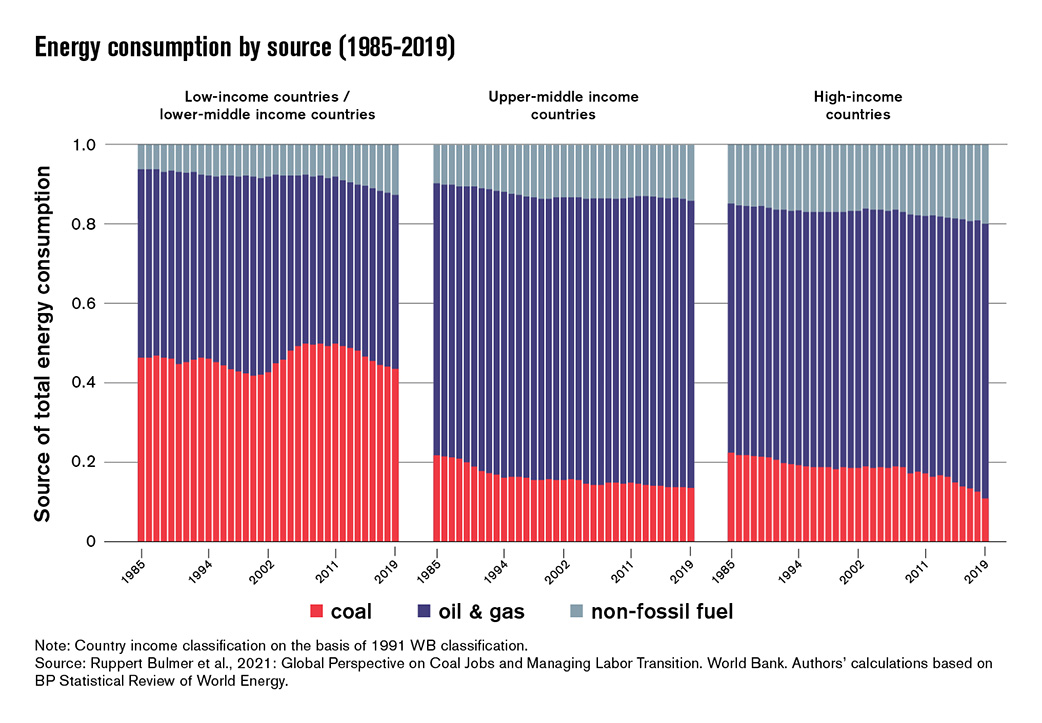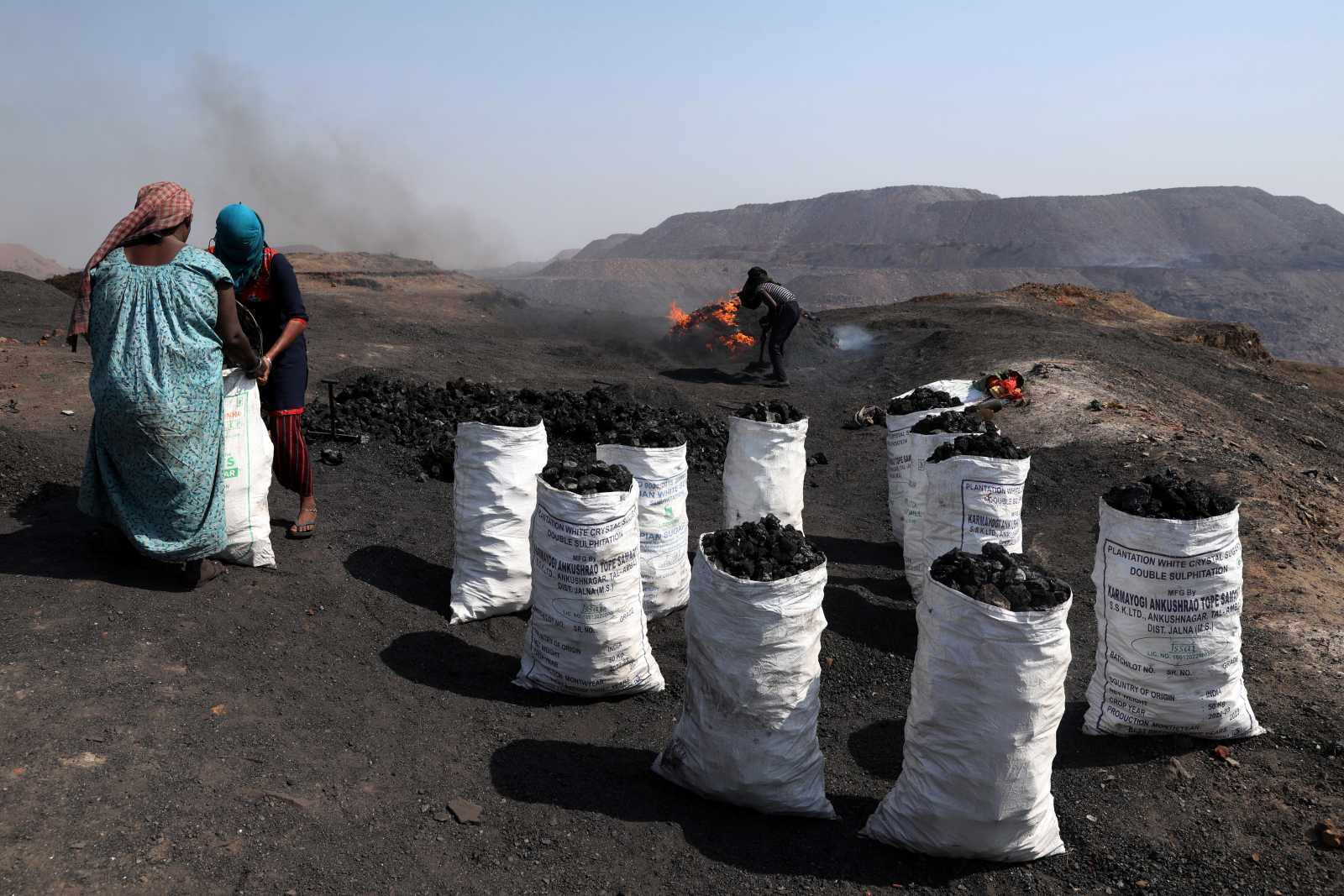Renewable energy
Facilitating the transition away from coal

More and more communities are suffering the impacts of extreme weather events, which damage homes, roads and other kinds of basic infrastructure on which people’s wellbeing and livelihoods depend. While everyone agrees that taking action to address climate change in the long term is important, the rush to respond to immediate needs, repair damage and restore livelihoods takes priority in the moment, diverting attention from longer-term climate objectives. We tend to lose sight of the big picture – namely, the need to decarbonise in order to prevent or at least minimise future impacts of global warming.
Many responders, whether individuals, local governments or national policymakers, are simply worn out or overwhelmed by the magnitude of the change needed. But if we are tired now, how will we feel in 10 years, when climate-change effects will have intensified? If our fiscal resources are strained just keeping up with ongoing climate shocks, how much worse off will we be a decade from now?
It is terrifying to ponder these questions, but it should help to spur action. At the individual level, adjusting our consumption patterns and energy-use behaviour could eventually add up to make a dent in carbon emissions. But governments could make a much bigger difference. On the one hand, they could shift their direct consumption and investment decisions in ways that reduce their carbon footprint. On the other, they could introduce policy incentives that induce action by a wide range of economic agents: large and small firms, high- and low-income households, state agencies at the national and subnational levels.
Moving to renewable energy sources
One of the most important options for significant decarbonisation is to transition away from coal to renewable-energy sources. The past two decades saw a sharp increase in coal consumption in developing countries, due to strong economic growth and rising incomes. Since 1990, China’s per capita electricity consumption increased by a factor of nine, Indonesia’s rose by a factor of six and India’s more than tripled, according to a recent World Bank report (Ruppert Bulmer et al., 2021).
During this period, low-income and lower-middle income countries also increased their dependence on coal. This commodity currently delivers nearly half of developing countries’ total energy needs (see figure below). Richer countries, by contrast, have increasingly shifted towards natural gas, which until recently has been readily available at low prices and was deemed “cleaner” than coal. However, global markets and consumer sentiment are dramatically different today, as Russia’s war in Ukraine rages on. Sadly, the ongoing oil and gas supply disruptions and resulting energy crisis have increased the appeal of coal. Coal prices have rebounded and mines are being reopened or expanded in many countries.

Reducing reliance on coal-fired electricity requires significant investment in renewable power generation and resilient distribution networks. Moreover, it is necessary to address the price distortions that make excessive energy consumption attractive. Carbon taxes can serve that purpose, and it also makes sense to introduce efficiency incentives to induce lower consumption. To achieve significant progress at the global level, concurrent policy efforts and investment are needed at scale.
Changes in the coal sector
Today, 10 countries produce 90 % of all coal mined globally each year. Once-dominant European and North American producers have been squeezed out by China, India, Indonesia, Australia and Russia, among others. For much of the last decade, global coal prices were declining, so many coal mines scaled back production and eliminated jobs. The level of coal sector employment is not high, with only 4.7 million jobs worldwide in 2019. This is one third below the level of 2008. Even in the most important coal producing countries, coal jobs account for less than 0.5 % of national employment.
Despite small job numbers, coal sector jobs tend to play a disproportionate role in the local economies where coal mines operate. Mine workers earn salaries, and they spend their earnings on housing, food, health and other needs. Their expenditure sustains jobs in other sectors, and these jobs are at risk when a mine closes. Such indirect effects help to explain why mine closures cause enormous hardship, undermining local economies and hollowing out communities. In past decades, episodes of this kind occurred in many places. Unaddressed environmental damage further impeded economic recovery in many mining regions. Unhappy memories linger on, so the prospect of coal-mine closure is politically fraught.
Many coal-producing countries are grappling with the conflicting objectives of decarbonisation and job creation. Governments have sought technical assistance from international organisations to help plan for coal transition. Key is to ensure that future mine closures are well-managed. In order to avoid backlash, it is necessary to facilitate a just transition to viable economic alternatives for affected workers and their communities. Improving the environmental health of mining lands will benefit the health of the local population and at the same time create economic opportunities.
The World Bank’s Approach
The World Bank has developed a comprehensive, multi-sectoral approach to coal transition, with heavy emphasis on pre-closure diagnostics, institutional analyses and multi-stakeholder engagement. It is important to assess alternative energy pathways and their likely impact on jobs in affected communities from the start. Critical aspects include the scope of affected workers, their skill profiles and the alternative employment opportunities that may be available following mine closure. To some extent, that may include land clean-up and repurposing, for example for renewable energy or other activities. Such information is then used to design support policies that facilitate inclusive transition and mitigate income shocks in the adjustment period.
This comprehensive World Bank approach takes time and effort. Much coordination within and across government agencies is needed. Consulting communities on their concerns and priorities is essential. The result should be a thorough, consistent transition plan and an appropriate institutional governance structure to implement it. These elements can jointly facilitate government commitment and convince various stakeholders of the approach. When governments have a clear vision of the costs and benefits of coal transition, they can take the necessary bold action, allocating public resources to sustainable investments that adequately account for the climate crisis.
Both public and private financing will be needed to meet the scale of the challenge. At the recent COP and G20 summits, advanced economies committed to mobilising additional public and private financing to accelerate coal transition in some of the largest coal-producing countries, including Indonesia and South Africa.
As more and more people around the world struggle with the impacts of global warming and government resources are strained by short-term crisis response, it is time to start addressing the structural challenges of decarbonisation. This requires careful planning, investing public resources at the necessary scale and aligning incentives that empower economic agents – individual consumers, families, local communities and private businesses of all sizes – to play a role.
Further reading
Ruppert Bulmer, E., Pela, K., Eberhard-Ruiz, A., Montoya, J., 2021: Global perspective on coal jobs and managing labor transition out of coal: Key issues and policy responses. Washington, DC: World Bank.
https://openknowledge.worldbank.org/handle/10986/37118
World Bank: Just transition for all: The World Bank Group’s support to countries transitioning away from coal.
https://www.worldbank.org/en/topic/extractiveindustries/justtransition
Elizabeth Ruppert Bulmer is a Lead Economist in the Jobs Group at the World Bank.
eruppertbulmer@worldbank.org














